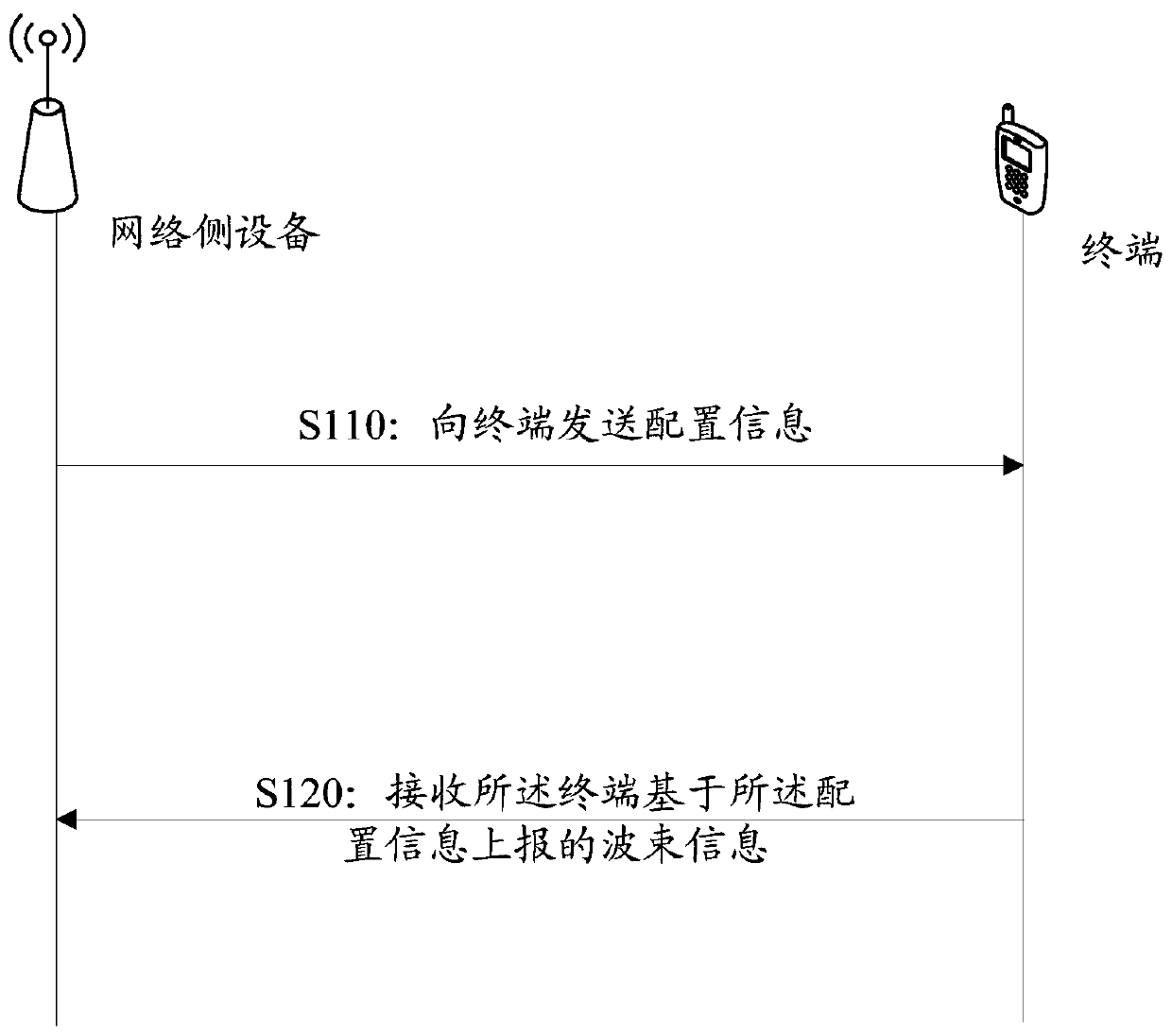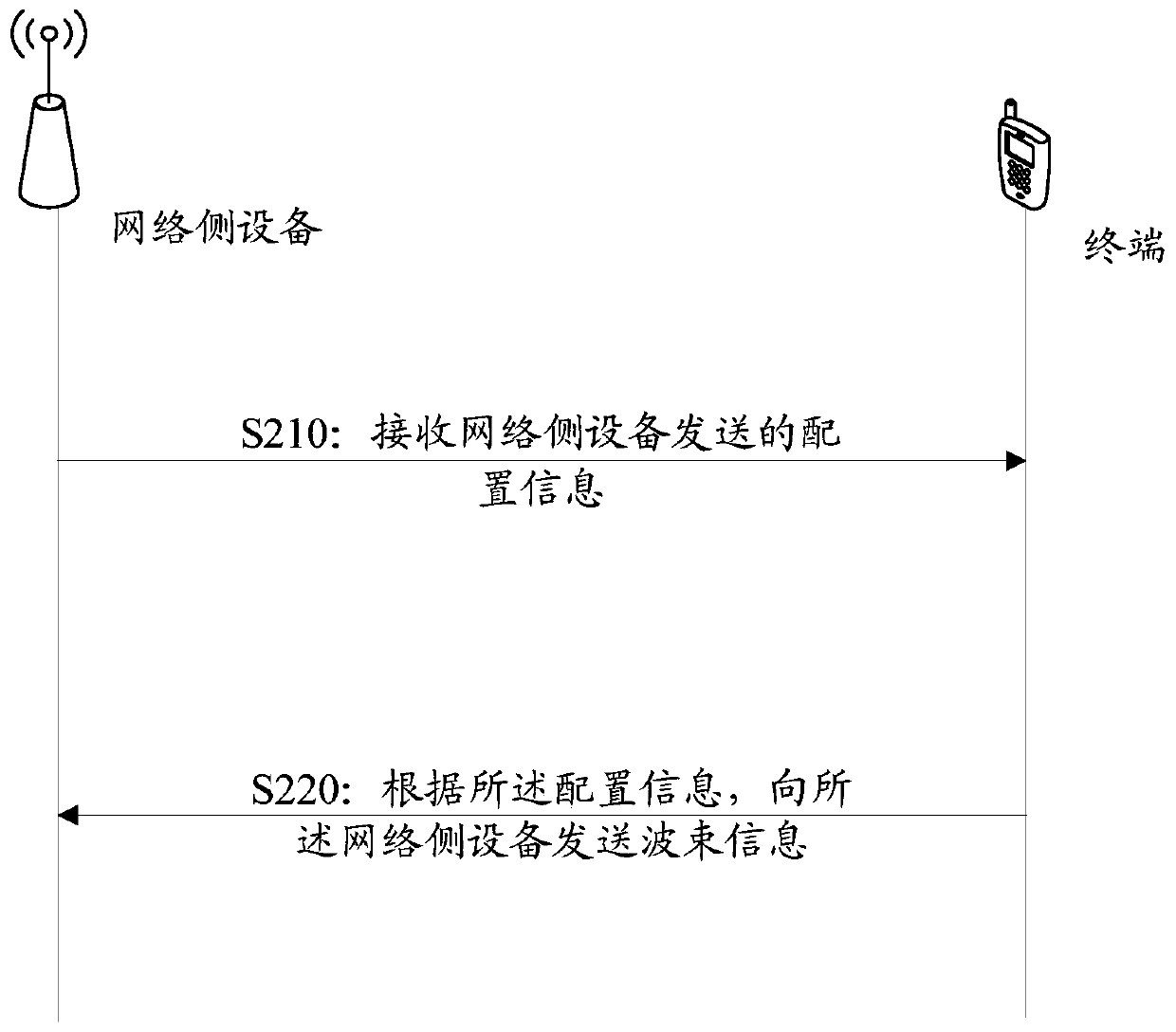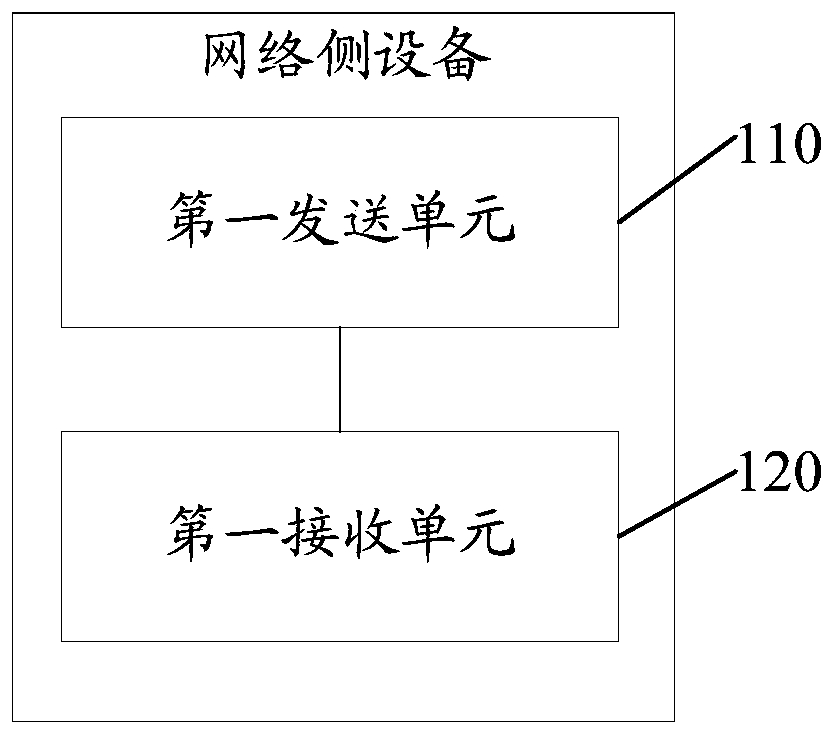Beam information acquisition method and reporting method, network side equipment and terminal
A network-side device and beam information technology, which is applied in network planning, network traffic/resource management, wireless communication, etc., can solve the problems that beam information reporting cannot adapt to channel conditions, reporting high signaling overhead, etc., to achieve further reduction of channel conditions Effects of worsening, reducing reporting, and saving channel overhead
- Summary
- Abstract
- Description
- Claims
- Application Information
AI Technical Summary
Problems solved by technology
Method used
Image
Examples
example 1
[0163] The beam quality information acquisition method provided in this example may be a method applied to beam information of downlink beams in downlink beam management.
[0164] Figure 5 A schematic diagram of downlink beam management provided for this example, including:
[0165] Phase 1: The UE measures different transmit and receive beam node (Transmission and Reception Point, TRP) beams to determine the TRP transmit beam and the UE receive beam.
[0166] Phase 2: The receiving beam of the UE remains unchanged, and the transmitting beam within the TRP and / or between TRPs is changed for the UE to measure different TRP transmitting beams.
[0167] Phase 3: The beam sent by the TRP remains unchanged, and the receiving beam of the UE is changed, which is used for the UE to measure different UE receiving beams. In this example, the TRP may refer to a beam transmitting node such as a base station that transmits a beam to a terminal.
[0168] Such as figure 1 with figure ...
example 2
[0172] Such as Figure 6 As shown, this example provides a beam quality information processing method, including:
[0173] Step S1: the base station acquires configuration information; the configuration information is any configuration information provided in the foregoing embodiments. For example, the configuration information may include: one or more of a report type identifier, a report offset, an information report identifier, and a beam quality report switch identifier. Certainly, the configuration information may also include: one or more of reporting time type identifier, reporting period indication, reporting bandwidth identifier, sending resource group identifier, sending resource identifier, receiving resource group identifier and receiving resource identifier.
[0174] Step S2: the base station sends the configuration information to the terminal, for example, sends the configuration information through RRC signaling or DCI or MAC layer CE.
[0175] Step S3: The te...
example 3
[0180] Such as Figure 7 As shown, this example provides a method for reporting beam information, including:
[0181] Step S21: The TRP can carry the configuration parameters related to the beam group or beam reporting with a long change period through the NR RC signaling, such as: beam reporting type, reporting period, and reporting bandwidth.
[0182] The TRP can also report related configuration parameters through the NR MAC layer CE or the NR DCI on the New Radio Physical Downlink Control Channel (New RadioPhysical Downlink Control Channel, NR-PDCCH) carrying a beam group or beam with a shorter change cycle, such as: Send resource identification, etc.; for beam measurement and reporting on the UE side.
[0183] Therefore, in this example, the configuration information sent by the TRP to the terminal can be sent separately, and is not limited to one-time sending.
[0184] In this example, the corresponding bearer signaling is selected according to the change rate of the c...
PUM
 Login to View More
Login to View More Abstract
Description
Claims
Application Information
 Login to View More
Login to View More - R&D
- Intellectual Property
- Life Sciences
- Materials
- Tech Scout
- Unparalleled Data Quality
- Higher Quality Content
- 60% Fewer Hallucinations
Browse by: Latest US Patents, China's latest patents, Technical Efficacy Thesaurus, Application Domain, Technology Topic, Popular Technical Reports.
© 2025 PatSnap. All rights reserved.Legal|Privacy policy|Modern Slavery Act Transparency Statement|Sitemap|About US| Contact US: help@patsnap.com



